#aloe africana
Text

The garden keeps us busy as ever - today, all these lovely Aloe africana babies got individually repotted. Can you believe this were all under one single plant in a single pot? Whoever thinks container gardening is not fruitful, is truly missing something amazing. So much healing power, and so much life, in these green children 🥰.
#carolinagonzalez#herbalism#aloe africana#urban gardening#container gardening#organic gardening#gardening#sustainability#self sufficiency#spiritual work#spirituality#herbal medicine
9 notes
·
View notes
Text


Aloe africana
This Aloe species comes from the Port Elizabeth area of South Africa's Eastern Cape Province. It is one of the aloes that can get quite tall (sometimes to 15 ft., or 4 1/2 m), but remains single-headed. The flowers are red-orange to orange at the but stage, turning yellow when they open, and they are distinctive in the way they point downward, but have up-turned tips.
-Brian
21 notes
·
View notes
Text
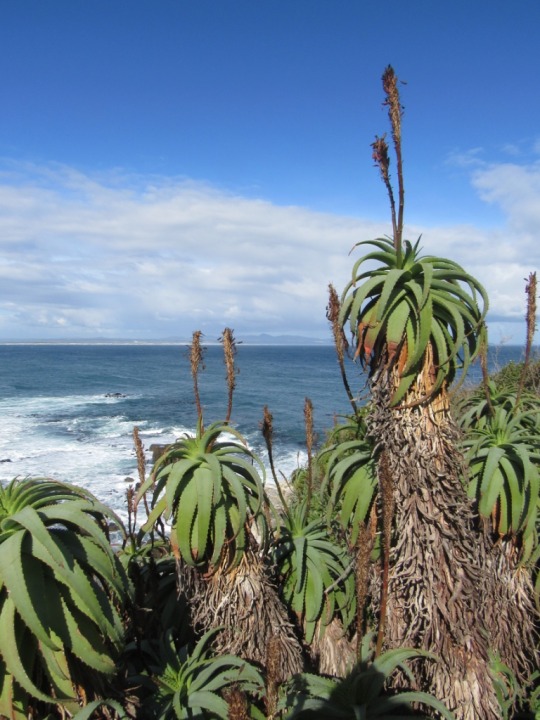
Aloe africana, along the Western Cape coast, by Hermanus
9 notes
·
View notes
Text
Plantas mais pesquisadas na internet

- Suculentas: As suculentas são muito populares devido à sua facilidade de cuidado e variedade de formas e cores.
- Orquídeas: As orquídeas são conhecidas por suas flores bonitas e exóticas.
- Bambu da Sorte: O bambu da sorte é muitas vezes procurado por suas propriedades de trazer boa sorte e prosperidade.
- Aloe Vera: A Aloe Vera é popular por suas propriedades medicinais e de cura.
- Cactos: Os cactos são populares devido à sua resistência e aparência única.
- Lírios: Os lírios são amados por suas flores grandes e perfumadas.
- Rosas: As rosas são clássicas e são frequentemente pesquisadas por jardineiros e amantes de flores.
- Lavandas: As lavandas são conhecidas por seu aroma calmante e flores bonitas.
- Violetas Africanas: As violetas africanas são populares por suas flores coloridas e capacidade de florescer dentro de casa.
- Ficus: O Ficus é uma planta de interior popular que é muitas vezes pesquisada por aqueles interessados em plantas de interior.
- Monstera Deliciosa: Conhecida por suas folhas grandes e distintas, a Monstera é uma planta de interior muito popular.
- Pilea Peperomioides: Também conhecida como planta do dinheiro chinês, é apreciada por suas folhas redondas e brilhantes.
- Philodendron: Este é um gênero de plantas que é conhecido por sua variedade e facilidade de cuidado.
- Snake Plant (Sansevieria): Conhecida por suas folhas altas e estruturadas, é uma planta de interior muito resistente.
- Peônias: As peônias são amadas por suas flores grandes e vistosas.
- Hortênsias: Conhecidas por suas flores em forma de bola e cores vibrantes.
- Girassóis: Os girassóis são populares por suas flores grandes e brilhantes que trazem alegria aos jardins.
- Tulipas: As tulipas são uma escolha popular para jardins e arranjos florais devido à sua variedade de cores.
- Azaleias: As azaleias florescem na primavera e são conhecidas por suas flores coloridas e abundantes.
- Begônias: As begônias são populares tanto como plantas de interior quanto de exterior, e vêm em muitas variedades diferentes.

- Bonsai: A arte do Bonsai é uma forma tradicional de cultivar árvores em miniatura que é muito popular e pesquisada online.
- Camélias: Conhecidas por suas flores bonitas e folhagem verde-escura, as camélias são uma adição popular a muitos jardins.
- Dálias: As dálias são apreciadas por suas flores grandes e coloridas, e são uma escolha popular para jardins e arranjos florais.
- Ferns (Samambaias): As samambaias são plantas de interior e exterior populares conhecidas por sua folhagem delicada e aparência exuberante.
- Gerânios: Os gerânios são fáceis de cuidar e proporcionam uma cor vibrante aos jardins e varandas.
- Jade Plant (Planta Jade): A planta jade é muitas vezes associada à sorte e prosperidade, e é uma planta de interior popular.
- Lírio da Paz: O lírio da paz é valorizado por suas flores brancas distintas e é uma escolha popular para interiores.
- Magnólias: As magnólias são conhecidas por suas flores grandes e fragrantes que são um espetáculo na primavera.
- Narcisos: Os narcisos são uma das primeiras flores a florescer na primavera, trazendo cor e alegria aos jardins.
- Palmeiras: As palmeiras são muitas vezes associadas a climas tropicais e são populares em paisagismo e design de interiores.
Read the full article
0 notes
Text
Aloe Vera


Scientific Names: Aloe africana
Other Common Names: Barbados aloe, burn plant, Cape aloe, elephant’s gall, first-aid plant, lily of the desert, miracle plant, and plant of immortality. Other scientific names include Aloe arborescens natalenis, Aloe vera L., Aloe barbadensis, Aloe ferox, Aloe spicata, Aloe vulgaris, Aloe perfoliata, and Aloe perryi.
Overall Safety: Topical: 😊, Oral: 🙁
Therapeutic Efficacy and Considerations:
Radiation-Induced Dermatitis: 🙁 The available evidence does not support use for this indication. Three of four trials have demonstrated negative results or increased healing time.
Psoriasis: 😊 Although evidence is limited to date, topical aloe may help to reduce psoriatic lesions.
Wound Healing: 😐 Fresh aloe and aloe gel are commonly used for minor wounds and burns. No clinical evidence supports this use, despite positive results in animal studies and in anecdotal reports.
Laxative/Cathartic: 🙁 Despite common use as a laxative, no clinical evidence supports this use. Because the laxative effects of aloe are due to GI-irritating anthraquinone components, use for this purpose is not recommended.
Chemistry/Pharmacology:
Aloe gel, from mucilaginous cells of the inner leaf, contains a variety of components contributing to various effects. Carboxypeptidase and salicylate components inhibit bradykinin, a pain-producing agent. The magnesium lactate component can inhibit histamine, which may reduce itching, while C-glucosyl chromone may reduce topical inflammation. Aloe gel slows or inhibits thromboxane synthesis, which may speed burn healing. Some evidence suggests aloe gel has antibacterial and antifungal properties.
Drug Interactions:
No known interactions exist for topical use. May reduce absorption of oral drugs due to shorter GI transit time. Overuse leading to excess potassium loss can lead to increased risks or side effects with digoxin, antiarrhythmics, diuretics, and corticosteroids. Use cautiously with hypoglycemic drugs, due to claims of hypoglycemic activity.
Contraindications/Precautions:
Contraindicated in patients allergic to the Liliaceae family (garlic, onions, and tulips), during pregnancy, and in patients with kidney or cardiac disease. Use with caution in children under 12 and in patients with bowel obstruction.
Adverse Effects:
Topical Use: Allergic reaction and erythema.
Oral Use: Abdominal pain, cramps, spasms, nephrotoxicity, red colored urine, and accumulation of blood in pelvic region. Abuse can cause diarrhea, potassium depletion, albuminuria, hematuria, muscle weakness, weight loss, heart disturbances, and pseudomelanosis coli.
#sigler dietary supplement drug cards#2nd edition#aloe vera#aloe africana#barbados aloe#burn plant#cape aloe#elephant's gall#first-aid plant#lily of the desert#miracle plant#plant of immortality#aloe aborescens matalenis#aloe vera l#aloe barbadensis#aloe ferox#aloe spicata#aloe vulgaris#aloe perfoliata#aloe perryi#drug facts
0 notes
Photo
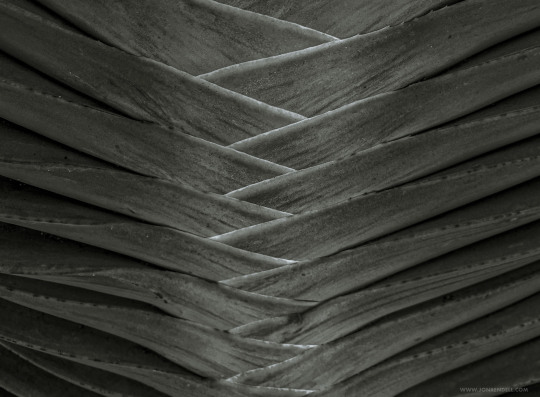
Day 262 — Fan Aloe
Native to South Africa, aloe plicatilis was first given a Latin name (Aloe africana arborescens montana non spinosa folio longissimo, plicatili, flore rubro) in 1695 by Heinrich Bernhard Oldenland (1663-1722), the master gardener at the Dutch East India Company garden in Cape Town. In 1753, the Swedish botanist Carl Linnaeus renamed it Aloe disticha var. plicatilis, and this was in turn replaced with its present name by Philip Miller, Curator of the Chelsea Physic Garden, in 1768. The clusters of leaves resemble an open fan, giving rise to the fan aloe's common name.
30 notes
·
View notes
Photo





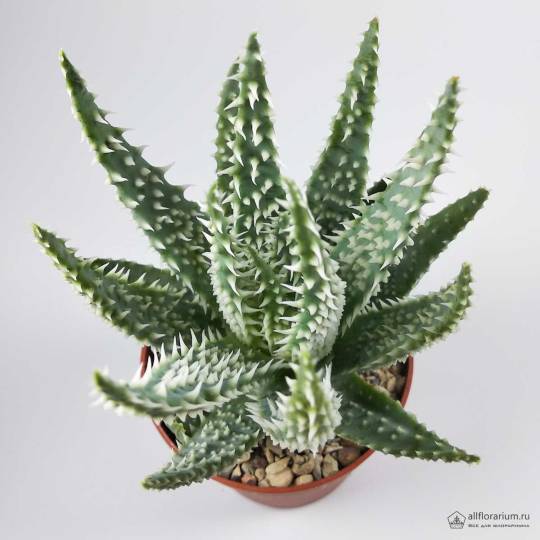
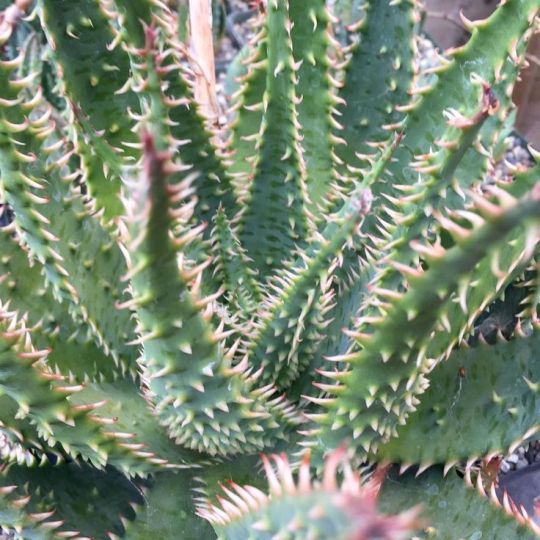


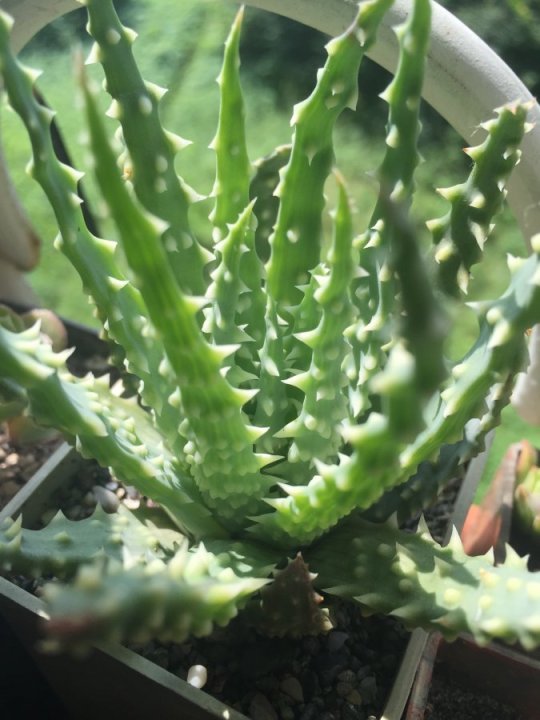
Aloe humilis x africana
3 notes
·
View notes
Text

🌙✎ . . .Vários dicionários de flores foram escritos e publicados na era vitoriana em um esforço para preservar a tradição transmitida através dos tempos sobre o significado das flores e as propriedades a elas associadas. Isso é conhecido como “floriografia”, e muitas sebes contribuíram para esse corpo de sabedoria para a magia das flores e a cura à base de ervas. Caso pretenda favorecer um amigo, familiar ou mesmo uma nova paixão com bouquet, este índice floral irá orientar as suas escolhas.
UMA
Abatina: inconstância
Acacia: amor casto
Acácia, rosa: elegância
Acácia, amarela: amor secreto
Acanthus: as belas-artes, o artifício
Achillea Millefolia: Guerra
Aconite, Crowfoot: Lustre
Aconite, Wolfsbane: Misantropia
Adonis: lembrança dolorosa
Calêndula africana: mentes vulgares
Agnus Castus: Frieza
Agrimony: Agradecimento, gratidão
Amêndoa: Estupidez, indiscrição
Amêndoa, Floração: Esperança
Amêndoa, Louro: Perfídia
Pimenta da Jamaica: Compaixão
Aloe: tristeza, afeto
Althea Frutex: Persuasão
Alyssum, Sweet: vale além da beleza
Amaranto: Imortalidade, amor imperecível
Amaranth, Cockscomb: Foppery, afetação
Amaranto, Globo: Imutável
Amarílis: Orgulho
Ambrosia: O amor voltou
American Elm: Patriotismo
American Linden: Matrimônio
B
Botões de Bacharel: Bem-aventurança individual
Bálsamo: simpatia
Bálsamo, gentil: gentileza
Bálsamo de Gilead: cura, alívio
Bálsamo: impaciência
Bálsamo, vermelho: não me toque, resolução impaciente
Bérberis: azedo, aspereza, mau humor
Basil: ódio
Folha de louro: eu mudo, mas na morte
Bay Tree: Glória
Grinalda da baía: recompensa de mérito
Crepis Barbudo: Proteção
Árvore de faia: prosperidade
Bee Orchis: Indústria
Bee Ophrys: Erro
Begônia: pensamentos sombrios
Belladonna: Silence
Flor de Sino, Branca: Declaro contra você
Betony: Surpresa
Boldo: Traição
Trepadeira, Ótimo: Insinuação
Trepadeira, pequena: humildade
Birch: Mansidão
Birdsfoot Trefoil: Revenge
Bitterweed, Nightshade: Truth
Álamo Negro: Coragem
C
Repolho: Lucro
Cacalia: Adulação
Calceolaria: Fique com isso por mim
Calla Aethiopica: beleza magnífica
Calycanthus: benevolência
Camellia Japonica, White: Excelência Unpretending
Camomila: Energia na adversidade
Campânula: Gratidão
Canariensis: autoestima
Canary Grass: Perseverance
Candytuft: indiferença
Canterbury Bell: reconhecimento
Cardamina: erro paterno
Flor Cardeal: Distinção
Cravo, Vermelho: Ai do meu pobre coração
Cravo, listrado: recusa
Cravo, Amarelo: Desdém
Catsus: Calor
Catchfly: Snare
Catchfly, Red: amor jovem
Catchfly, White: Traição
Cedro: Força
Cedro do Líbano: Incorruptível
Folha de cedro: eu vivo para ti
Celandine: alegrias por vir
Centuário: Felicidade
Cerebus, rastejante: gênio modesto
Champignon: Suspeita
Coroa Imperial: Majestade, poderosa
D, E
Narciso: Atenciosamente
Narciso, Grande Amarelo: Cavalaria
Dália, Solteira: Bom gosto
Dahlia: Instabilidade
Daisy, Double: Participação
Daisy, Garden: eu compartilho sua opinião
Margarida, Caolho: Um token
Daisy, Particolored: Beauty
Margarida, Vermelha: Inconsciente
Margarida, Branca: Inocente
Daisy, Wild: vou pensar nisso
Dente-de-leão: oráculo
Daphne Odora: Pintando o lírio
Darnel: Vice
Folhas mortas: tristeza
Planta de orvalho: uma serenata
Diosma: Inutilidade
Dittany de Creta: Nascimento
Ditamo, Branco: Paixão
Dock: Paciência
Dodder of Thyme: Baseness
Dogmatismo: Engano, falsidade
Dogwood: Durabilidade
Planta Dragão: laço
Dragonwort: Horror
Linho Seco: Utilidade
Ebony Tree: Blackness
Eglantine ou Sweet Briar: Poesia, feri para curar
Ancião: Zelo
Elm: Dignidade
Sombra da Noite do Encantador: Fascinação, bruxaria
Endiva: Frugalidade
Eschscholtzia: Doçura
Eupatorium: Atraso
“Evergreen: Poverty
Evergreen, Thorn: consolo na adversidade
Ervilha Eterna: Prazer duradouro, uma reunião marcada🌙
🧙🏻♀️Namawitch
"Faça o que quiser, desde que não prejudique ninguém".😘
Seja Luz 🌻
— [✿🖤Meus Estudos✿] - -❀ೃ .
○°•°♡Bom esse foi o meu blog espero que tenham gostado. Que os Deuses nos abençoe sempre!♡°•°○
6 notes
·
View notes
Photo
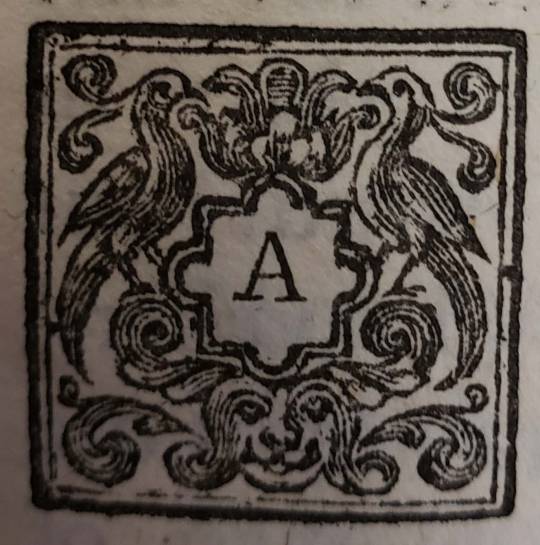
From: Cowell, John (Nurseryman). A true account of the aloe americana or africana, which is now in blossom in Mr. Cowell's garden at Hoxton, which is upwards of twenty foot high, and has already put forth thirty branches for flowers, all upon one stem, twelve whereof are already fairly opened and blown out. London : T. Warner, 1729
QK495.A44 C8 1729
#woodcut#capitalletter#lettera#a#letter#birds#face#english#1720s#early18thcentury#woodcutwednesday#specialcollections#rarebooks#libraryofva
30 notes
·
View notes
Text
13 Plantas decorativas para el interior del hogar que son muy fáciles de cuidar

Compártelo en Facebook
Tuitéalo
Si eres adorador de la plantación o de la hermoseamiento, o si simplemente tienes tiempo osado y necesitas poco terapéutico para hacer, te interesará memorizar que hay plantas decorativas para el interior del hogar que, encima de ser bellas y resistentes, son muy sencillas de cuidar. Estas plantas aportan oxígeno a los espacios, encima de color, vida y elegancia. Ingresar a un ámbito ornamento con plantas es, sin duda, una grata experiencia, y más aún si ese ámbito es tuyo y fue acondicionado por ti.
Genial.guru quiere presentarte una selección de 13 plantas que son ideales para el interior del hogar, ya que son decorativas, resistentes y, encima, son fáciles de cuidar.
1. Plantas suculentas o crasas
Existen varias especies de este tipo de suculentas no cactáceas, o plantas crasas, y todas son en realidad hermosas y decorativas. Estas plantas requieren muy poco mantenimiento, ya que no necesitan mucho riego adecuado a que contienen un almacén de agua interiormente de ellas. Este, generalmente, se encuentra en sus hojas, aunque asimismo puede estar en los tallos o en entreambos lugares. Gracias a esta aclimatación, pueden proceder en climas áridos y secos. Al ser pequeñas, no ocupan mucho espacio; puedes hacer o comprar unas lindas macetas para estas crasas y colocarlas en mesas, muebles o estantes.
2. Cinta o malamadre
La Chlorophytum comosum, mejor conocida como cinta o malamadre, es ideal para verla crecer cerca de tu ventana o para colgarla en algún sitio de la sala. Es muy resistente y se adapta a muchos ambientes. Esta planta no requiere de mucho mantenimiento, solo procura asegurarle una buena dosis de luz, pero sin exponerla al sol directo. Si ves que tiene las puntas secas, puede ser que esté recibiendo demasiada luz solar o que le falte humedad. Lo ideal es regarla cada 5 días o una vez a la semana en otoño e invierno; en climas más calurosos, debes aumentar la dosis a dos o tres veces por semana.
3. Orquídeas alevilla o polilla
Este tipo de orquídea es la más conocida de todas y es ideal para el hogar adecuado a la duración prolongada de sus flores (de dos a tres meses) y por su resistor a los interiores. Esta planta necesita luz, pero sin el contacto directo del sol robusto, por ello puedes colocarla pegado a una ventana orientada al este o al oeste, con una cortina fina de por medio. La planta tiene unas pocas hojas que son grandes y gruesas, pero no muy largas. Las flores son hermosas y pueden aparecer en cualquier momento del año. Sus colores pueden ser rojo violáceo, rosa, blanco, entre otros.
4. Ludisia discolor u orquídea alhaja
Esta planta es una de las favoritas de los amantes de las plantas de interior, ya que sus hojas tienen un gran valía ornamental y sus flores, si admisiblemente son pequeñas, asimismo son hermosas. Muchos la eligen para embellecer sus casas porque puede durar muchos primaveras, siempre y cuando esté en una habitación iluminada y con adhesión humedad ambiental. Para esto, puedes colocar varios vasos de agua rodeando de la planta o un humidificador. Puedes regarla dos o tres veces por semana en verano y desmontar la frecuencia el resto del año. Procura mantenerla alejada del flato acondicionado o el ventilador, y disfruta de su grata compañía por muchos primaveras.
5. Potus
Epipremnum aureum, comúnmente conocida como potus, es una planta de interior trepadora decorativa muy sencillo de cuidar. Sus hojas tienen diferentes tonalidades de verde y es una de las preferidas para embellecer oficinas e interiores de vivienda. No es muy pequeña, pero si la colocas en una pichel chica, no crecerá mucho y podrás usar una timonel para indicarle cerca de dónde quieres que se extienda. Otra delantera es que es muy resistente y ayuda a disminuir la contaminación ambiental en interiores. Para que el potus se desarrolle mejor, es recomendable la luz media indirecta, porque los largos periodos de luz solar directa podrían malgastar sus hojas.
6. Violeta africana
La violáceo africana es una planta de interior que prefiere los ambientes luminosos para prosperar. Gracias a su intensa floración, su pequeño tamaño y belleza decorativa, esta planta goza de mucha popularidad. Si admisiblemente hay muchas variedades, la más popular es la de color morado intenso y es común verla en las casas de los aficionados de las plantas de interior sobre la mesa de la sala principal. Las flores de la violáceo africana pueden aparecer en cualquier época del año; tras la floración, procura podar los tallos florales marchitos.
7. Peperomia caperata o culo de ratón
Peperomia caperata, asimismo señal culo de ratón, es una pequeña planta de interior compuesta por una roseta de abundantes hojas. Su atractivo radica, en gran parte, en la marcada nervadura de sus hojas, que pueden ser de diversas tonalidades de verde ambiguo, mientras que en la parte interior tienen un color rojizo. Sus flores suelen ser de color blanco. Esta bella planta de interior no es muy quisquilloso en cuanto a cuidados, solo procura colocarla en un entorno con luz moderada y regarla cuando su tierra esté sequía, evitando que se empape mucho.
8. Sansevieria o jerga de suegra
La Sansevieria, asimismo conocida como jerga de ternera o jerga de suegra, es una planta internacionalmente popular por sus hojas verticales y veteadas, y por la facilidad con la que puede ser propagada. Cuando esta planta recibe suficiente iluminación, nos regala unas flores blancas con un dulce perfume. Además, es muy resistente y tiene buena reputación de purificar el flato de la casa, por lo que es recomendable que la ubiques en las habitaciones en donde descansas. La única contra es que puede ser tenuemente tóxica para gatos y perros, ya que puede causarles aversión, diarrea o vómito.
9. Aloe orilla o sábila
Además de contar con muchísimas propiedades, la sábila es muy sencilla de cultivar porque se adapta perfectamente a espacios reducidos y brinda un aspecto muy interesante y sobrio. Puedes colocar la pichel en una ventana donde reciba algunos rayos de sol. En los climas de verano, es necesario regarla más seguido; pero en invierno, con regarla cada dos o tres semanas será suficiente. Procura que no quede agua estancada en su pichel, ya que puede hacer que se pudra con facilidad.
10. Tillandsia
La Tillandsia es una planta de la clan de las bromeliáceas, es muy resistente y puede proceder tanto en el foráneo como en el interior. Para el interior, es preferida por su exótica piropo espigada de color magenta que da vida al hogar. También es señal bromelia y está emparentada con el característico clavel del flato que cuelga de muchos balcones. Esta planta necesita de mucha luz, pero no le gusta el sol directo. Casi no hace yerro que la riegues, solo necesitas rociar sus hojas dos o tres veces por semana y con eso será suficiente.
11. Kalanchoe
El Kalanchoe puede crecer en cualquier rincón radiante de la casa y es estéticamente muy bello por sus exóticas flores y el color de sus hojas. Además, como algunas especies de esta suculenta son pequeñas, se suelen utilizar para hacer composiciones con otras plantas, aumentando aún más su valía ornamental. Como toda suculenta, su riego debe ser escaso: durante el verano, solo una o dos veces por semana, y el resto del año, cada 10 o 15 días.
12. Echeveria
Esta es una de las suculentas favoritas para embellecer los hogares. Mientras la sitúes en un sitio admisiblemente iluminado y soleado, podrá desarrollarse admisiblemente. Por lo universal, crecen en rosetas con hojas preciosas en una variedad de colores y, en ocasiones, les salen imponentes flores. Respecto a los cuidados, ten presente no dejar que el agua se asiente en la roseta, ya que puede causarle hongos o putrefacción. Procura eliminar las hojas muertas de la parte inferior de la planta a medida que esta va creciendo.
13. Geranio
Los geranios son plantas de piropo muy bellas para engalanar los espacios, incluso quedan muy decorativas sobre una mesa central. Muchos las eligen para el interior porque son fáciles de cuidar y tienen un tiempo de floración prolongado. Para que crezcan mejor, procura conseguirles un sitio en donde reciban varias horas de sol. Solo ten presente que, si está pegado a una ventana por la cual pasan los rayos solares directo al interior, no debes colocar la planta preciso delante de los vidrios, ya que las hojas se podrían malgastar como consecuencia del finalidad lupa.
¿Qué piensas de estas plantas como hermoseamiento? ¿Has cultivado plantas de interior? ¿Cómo ha sido tu experiencia? Te esperamos en la sección de comentarios.
function runAnalytics() { (function(win, doc, cb){ (win[cb] = win[cb] || []).push(function() { try { tnsCounterAdme_ru = new TNS.TnsCounter({ 'account':'adme_ru', 'tmsec': 'adme_total' }); } catch(e){} });
var tnsscript = doc.createElement('script'); tnsscript.type = 'text/javascript'; tnsscript.async = true; tnsscript.src = ('https:' == doc.location.protocol ? 'https:' : 'http:') + '//www.tns-counter.ru/tcounter.js'; var s = doc.getElementsByTagName('script')[0]; s.parentNode.insertBefore(tnsscript, s); })(window, this.document,'tnscounter_callback'); !function(f,b,e,v,n,t,s){if(f.fbq)return;n=f.fbq=function(){n.callMethod? n.callMethod.apply(n,arguments):n.queue.push(arguments)};if(!f._fbq)f._fbq=n; n.push=n;n.loaded=!0;n.version='2.0';n.queue=[];t=b.createElement(e);t.async=!0; t.src=v;s=b.getElementsByTagName(e)[0];s.parentNode.insertBefore(t,s)}(window, document,'script','https://connect.facebook.net/en_US/fbevents.js'); fbq('consent', 'grant'); fbq('init', '650520368394104'); fbq('track', 'ViewContent');
window.TSP.executeWhenReachedPagePercentage(75, function() { fbq('trackCustom', '75percent'); });
setTimeout(function () { fbq('trackCustom', '30sec'); }, 30000);
$('body').on('click', 'a', function() { fbq('track', 'Lead'); }); var _comscore = _comscore || []; _comscore.push({ c1: "2", c2: "19962933" }); (function() { var s = document.createElement("script"), el = document.getElementsByTagName("script")[0]; s.async = true; s.src = (document.location.protocol == "https:" ? "https://sb" : "http://b") + ".scorecardresearch.com/beacon.js"; el.parentNode.insertBefore(s, el); })(); }
Source link
from La Crónica Coruña https://lacronicacoruna.com/13-plantas-decorativas-para-el-interior-del-hogar-que-son-muy-faciles-de-cuidar/
2 notes
·
View notes
Text
Afrocentric Hair & Skin Care 101
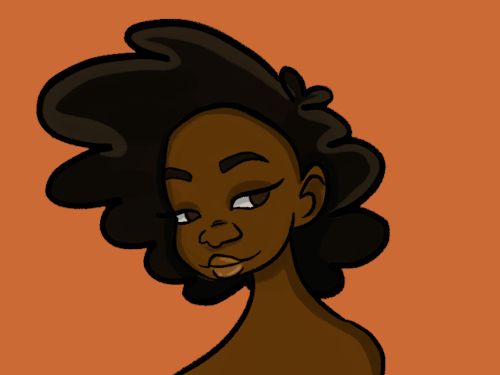
What is Afrocentric hair and skin care?
There’s a difference between general black hair and skin care vs. Afrocentric hair and skin care. A lot of mainstream brands sold in stores targeted at black hair and beauty are designed FOR black people but aren’t made BY black people and/or don’t contain ingredients from our own cultures.
You should always pick the products in your price range and that are good for your hair and your body! But it’s also helpful to be an informed consumer when choosing between hundreds of beauty brands - and unfortunately, the information isn’t always readily available. So here’s a simple guide to Afrocentric hair and skin care to help you put the best nature can provide into your body while also supporting and giving back to our own communities.
What’s good for my hair and skin?
Here’s some tips and general guidelines that I’ve learned so far through research and practice on my hair and skin hair journey!
1. The more natural, the better. Now, personally, I wouldn’t say this about everything in life! Pharmaceuticals can be life-saving, and I don’t think all natural or traditional remedies should be used in place of prescribed medications. However, when it comes to the regular care of your skin and hair - the fewer toxins and chemicals are absorbed by your body, the better!
2. As I’ve done more research, I’ve discovered that in most cases when it comes to all-natural ingredients, what’s good for your hair is also what’s good for your skin - and vice versa. Most natural ingredients can be used to hydrate, heal, protect, soothe, and strengthen your skin and your hair!
3. One size does not fit all. On your own journey to care for your skin and hair, you’ll want to experiment with different oils, butters, creams, and products to find out which types, combinations, and amounts work best for your skin and hair types! Find out if you have normal, dry, oily, combination, or sensitive skin to get a sense of what your skin care needs are. Knowing your hair type is also helpful for figuring out what types of products will keep it the healthiest and strongest.
4. Always read the ingredients list on the labels of any products you purchase. Whether you’re buying a supposedly single-ingredient product or something that lists three natural ingredients on its front label, always look at the fine print and check the official list. For instance, SheaMoisture is an excellent and popular black-owned skincare brand, but unfortunately, many of their products do include chemicals alongside the good stuff. And if you don’t check the labels, you might wind up with a “99% aloe vera gel” that contains mostly water.
This is a long post so click below the read more line to get to my lists of black-owned skin & hair care brands + Afrocentric skin & hair care ingredients.
Which skin and hair care ingredients are Afrocentric?
The following ingredients are all from different parts of Africa or were used traditionally in Africana cultures. They are all good for both skin and hair care, and they all contain good juju - physical and spiritual properties that are healing, rejuvenating, and nourishing for the body.
Ghassoul Clay
Origins: Natural mineral clay mined from the Atlas Mountains in Morroco that has been used in North Africa to create skin and hair treatments for centuries.
Benefits: Increases hair shine, reduces acne, exfoliates dead cells
Use It to Make: Exfoliating facial mask, face and body soap, facial cleanser, hair mask, deep conditioner
How-to-Use Guide: [LINK]
Yejide’s Product Recommendation: Zadia’s Morocco
Shea Butter
Origins: Fat extracted from the nut of the African shea tree, which grows in the dry savannah belt of West Africa from Senegal to Sudan and the Ethiopian highlands. It’s used both for cosmetics and in cooking!
Benefits: Anti-aging, anti-inflammation, soothes itchy or irritated skin
Use It to Make: Skin moisturizer, lotion, shampoo, conditioner, soap
How-to-Use Guide: [LINK]
Yejide’s Product Recommendation: SheaMoisture
Cocoa Butter
Origins: Fat extracted from cocoa beans. It is used for skin care and also to create chocolate. Nearly 70% of the cocoa world crop today is grown in West Africa.
Benefits: Reduces stretch marks, anti-aging, moisturizing
Use It to Make: skin moisturizer, chapstick, shaving cream
How-to-Use Guide: [LINK]
Yejide’s Product Recommendation: SheaMoisture
Raw Honey
Origins: Honey was used in Kemet (Ancient Egypt) to treat stomach and skin wounds and other issues.
Benefits: Antibacterial, anti-fungal, reduces acne, pore unclogging
Use It to Make: Facial mask, acne treatment, bath, facial cleanser
How-to-Use Guide: [LINK]
Yejide’s Product Recommendation: beelove
Black Castor Oil
Origins: Oil from roasted castor seeds using a traditional Jamaican method of extracting them to create black castor oil. Castor seeds are from East Africa and have been used as a traditional medicine by multiple cultures including Kemet (Ancient Egypt).
Benefits: Hair / eyelash / eyebrow growth, healthy scalp, mild pain relief
Use It to Make: Hair moisturizer, acne treatment, pain relief rub
How-to-Use Guide: [LINK]
Yejide’s Product Recommendation: Sunny Isle
Coconut Oil
Origins: Oil extracted from coconut meat. Coconuts grow in various regions of Africa and in the Caribbean, where they are popular for both cuisine and cosmetics.
Benefits: Moisturizer, fights dandruff, anti-frizz, anti-aging
Use It to Make: Lip gel, skin softener, hair wash, deep-conditioner
How-to-Use Guide: [LINK]
Yejide’s Product Recommendation: Alaffia
Argan Oil
Origins: Oil produced from the kernels of the argan tree, which is native to Morocco. It is used in both Moroccan cuisines and cosmetics.
Benefits: Anti-aging, heat styling protection, combats dandruff
Use It to Make: Skin toner, exfoliator, nighttime moisturizer, conditioner
How-to-Use Guide: [LINK]
Yejide’s Product Recommendation: Zakia’s Morocco
Which hair and skin care brands are black-owned?
There’s many more black-owned brands out there, but here’s a starter list! I’ve specifically highlighted these particular brands based on how natural and high quality the ingredients are in their products. These are some real goodies for your hair and skin.
Some of these companies also have a social impact - whether it’s supporting black communities around the world, empowering women, or protecting animals and the environment with cruelty-free or vegan products!
Hair & Skin Care
BLK + GRN - Here you’ll find a selection of hair and skin products (alongside jewelry, cosmetics, and other goodies) from black-owned brands at this all-natural online marketplace curated by “Black women's health experts who know what an all-natural product truly looks like."
ILERA Apothecary - Sister duo Chinonye and Nneji Akunne went on a mission to create this premium organic and vegan skincare brand. You can find everything you’d want to put in your bathroom cabinet from fragrant body butters to beard oil to aluminum free deodorant!
beelove - Get your honey and honey-infused products for skin and hair care from this black-owned company in Chicago that provides job opportunities specifically for folks returning to society from incarceration. You'll find an amazing selection of lip balms, lotion, sugar scrubs, and bath/shower products. Don't forget that their pure, all-natural Chicagoland honey can also be used on your skin and hair all by itself!
ASIM Supreme - Started by entrepreneur Akil Jabbar, this hair and skin care product line has top-quality natural ingredients - many of which are even exported from the African countries where they are naturally grown and produced. Here you can meet all your natural skin and hair care needs for shea butter, coconut oil, argan oil, black castor oil, aloe vera oil, grapeseed oil, and more!
Sunny Isle Jamaican Black Castor Oil - This company supports rural farmers in Jamaica and preserves traditional Jamaican methods for extracting castor oil and coconut oil by using them to create excellent skin care products. Black Castor Oil can be used for many purposes including moisturizer, hair and eyelash growth, acne treatment, and even a pain relief rub!
Alaffia - By shopping at Alaffia, not only do you get quality natural ingredients, you are also helping encourage gender equality and alleviate poverty in Togo. Proceeds help fund Alaffia’s “Empowerment Projects” such as “Education-Based Projects, Maternal Health, FGM Eradication, Eyeglasses, and Reforestation.”
Natural Cosmetics
Blac Minerals Cosmetics - Merced Boyce wanted to create natural makeup for women of color that is "powered by healthy, skin-loving ingredients." Blac Minerals products are free of animal testing, phthalates, parabens, sulfates, mineral oil, petroleum, and other nasty chemicals. Check out the mineral foundations and lip glosses, which come in lots of shades!
Laws of Nature Cosmetics - Jasmine Rose, the founder of this all-natural makeup line, will personally email you her recommendation for which foundation shade best matches your skin tone if you fill out the Foundation Quiz! You can get powder, gel, or foundation sticks that are vegan, antioxidant-rich products free of parabens, silicone, and alcohol.
LUV + CO. - Join the #luvtribe and check out this incredible line from Dr. Melodie Ray Davis-Bundrage, which focuses on natural and organic foundation formulas specifically for women of color. These products are free of toxins, parabens, and carcinogens. Beyond foundation, there's also lipsticks, nail polish, and more!
OMGLO Cosmetics - Gone are the days of using highlighters and makeup setting sprays full of chemicals! Thank you, Joelle Phillips, for finding a way to give a golden finish to our makeup routine that’s full of organic, natural ingredients good for our skin.
#naturalhair#blackhair#skincare#haircare#beauty#blackownedbusiness#blackownedbusinesses#omglocosmetics#luv+co#lawsofnaturecosmetics#blacmineralscosmetics#alaffia#asimsupreme#sunnyisle#ileraapothecary#beelove#blk+grn#africanawomanism#sheabutter#cocoabutter#ghassoulclay#morocco#togo#egypt#africa#african#afrocentric#honey#arganoil#coconut
161 notes
·
View notes
Text

Today is the day we trim and repot our overgrown Aloe plants (vera and africana varieties, called Sábila in our traditional medicine), so we took the chance to harvest some of the pulp and freeze it for summer use. This is used for so many things that it would take a whole book to name all its uses and properties, but I thought it would make a wonderful Plant Profile Newsletter!
If you want to receive it, you still have a few hours to subscribe before it gets sent. Visit my website, and scroll down to the footer, where you will find the subscription box. Every month, you'll get exclusive articles, plant profiles, AND the Tarot Forecast – 100% original content, 100% free!
#carolinagonzalez#herbalism#spiritual work#aloe vera#aloe africana#newsletter#greenlife#greenliving#sustainability#herbalmedicine
2 notes
·
View notes
Photo

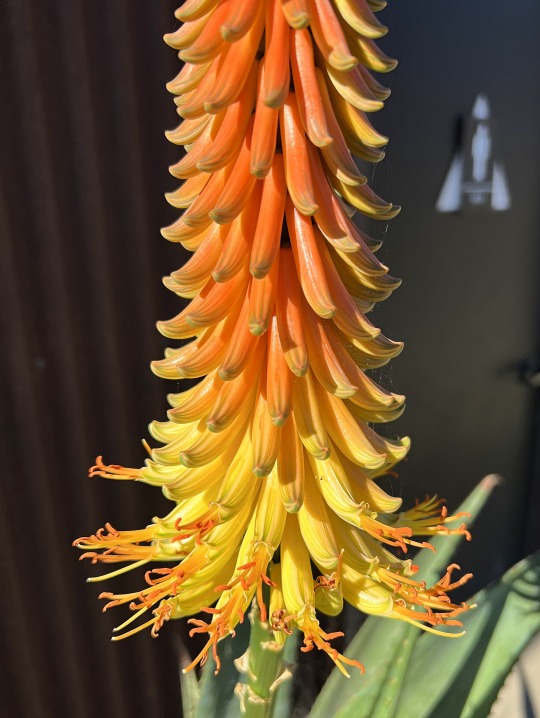
Aloe africana
South Africa has some very showy single-headed tall-growing aloe species, and Aloe africana is one of these, found in the south-central part of the country near Port Elizabeth. Although it is primarily winter-flowering, this species occasionally sends up a flower stalk at other times of the year, as it is doing now. The tall spike of flowers is very elegant, with red-orange buds giving way to bright yellow open flowers. The mouths of the flowers are a little bit up-turned, giving it a distinctive look.
-Brian
36 notes
·
View notes
Text
Outfit Details of the Bride and Bridal Party
The Wedding Dress: Clare Waight Keller for Givenchy
Ms. Meghan Markle’s wedding dress has been designed by the acclaimed British designer, Clare Waight Keller. Ms. Waight Keller last year became the first female Artistic Director at the historic French fashion house Givenchy.
After meeting Ms. Waight Keller in early 2018, Ms. Markle chose to work with her for her timeless and elegant aesthetic, impeccable tailoring, and relaxed demeanour. Ms. Markle also wanted to highlight the success of a leading British talent who has now served as the creative head of three globally influential fashion houses – Pringle of Scotland, Chloé, and now Givenchy.
Ms. Markle and Ms. Waight Keller worked closely together on the design. The dress epitomises a timeless minimal elegance referencing the codes of the iconic House of Givenchy and showcasing the expert craftsmanship of its world-renowned Parisian couture atelier founded in 1952.
The Design
True to the heritage of the house, the pure lines of the dress are achieved using six meticulously placed seams. The focus of the dress is the graphic open bateau neckline that gracefully frames the shoulders and emphasises the slender sculpted waist. The lines of the dress extend towards the back where the train flows in soft round folds cushioned by an underskirt in triple silk organza. The slim three-quarter sleeves add a note of refined modernity.
The Fabric
Following extensive research by Ms. Waight Keller in fabric mills throughout Europe, an exclusive double bonded silk cady was developed. Perfect for the round sculptural look required, the silk cady has a soft matt lustre whilst the bonding process and pure white colour chosen by Ms. Markle and Ms. Waight Keller bring a fresh modernity to the dress.
The Veil
Ms. Markle expressed the wish of having all 53 countries of the Commonwealth with her on her journey through the ceremony. Ms. Waight Keller designed a veil representing the distinctive flora of each Commonwealth country united in one spectacular floral composition.
The Commonwealth family of nations – of which Her Majesty The Queen is Head –will be a central part of Prince Harry’s and Ms. Markle’s official work following His Royal Highness’s appointment as Commonwealth Youth Ambassador. Ms. Markle wanted to express her gratitude for the opportunity to support the work of the Commonwealth by incorporating references to its members into the design of her wedding dress.
Significant time was spent researching the flora of each Commonwealth country and much care was taken by Ms. Waight Keller to ensure that every flower is unique.
The veil is five meters long and made from silk tulle with a trim of hand-embroidered flowers in silk threads and organza.
Each flower was worked flat, in three dimensions to create a unique and delicate design. The workers spent hundreds of hours meticulously sewing and washing their hands every thirty minutes to keep the tulle and threads pristine.
In addition to the flora of the Commonwealth, Ms. Markle also selected two personal favourites:
Wintersweet (Chimonanthus praecox), which grows in the grounds of Kensington Palace in front of Nottingham Cottage, and the California Poppy (Eschscholzia californica) the State flower from Ms. Markle’s place of birth, California.
Symmetrically placed at the very front of the veil, crops of wheat are delicately embroidered and blend into the flora, to symbolise love and charity.
A selection of flora distinctive from every member state of the Commonwealth is listed below:
AFRICA:
Botswana - Ear of Sorghum and Cat’s Claw (Uncaria tomentosa)
Cameroon - Red Stinkwood (Prunus africana)
Gambia - White Variety Orchid
Ghana - Caladium (Caladium)
Kenya - The Tropical Orchid
Lesotho - Spiral Aloe (Aloe polyphylla)
Malawi - Lotus (Nymphea lotus)
Mauritius - Trochetia Boutoniana
Mozambique - Maroon Bell Bean (Markhamia zanzibarica)
Namibia - Welwitschia (Welwitschia mirabilis)
Nigeria - Yellow Trumpet (Costus spectabilis)
Rwanda - Torch Lily (Kniphofia uvaria)
Seychelles - Tropicbird orchid (Angraecum eburnum)
Sierra Leone - Scadoxus (Scadoxus cinnabarinus)
South Africa - Protea (Protea cynaroides)
Swaziland - Fire Heath (Erica cerinthoides)
Uganda - Desert rose (Adenium obesum)
United Republic of Tanzania - African violet (Saintpaulia)
Zambia - Bougainvillea (Bougainvillea)
ASIA:
Bangladesh - White Water Lily ( Sada shapla)
Brunei Darussalam - Simpor (Dillenia suffruticosa)
India - Indian Lotus (Nelumbo nucifers gaertn)
Malaysia - Bunga Raya Hibiscus (Hibiscus rosa sinensis)
Pakistan - Jasmine (Jasminum officinale)
Singapore - Vanda miss Joaquim Orchid (Miss Joaquim)
Sri Lanka - Blue Water Lily (Nymphaea nouchali)
CARIBBEAN & AMERICAS:
Antigua and Barbuda - Agave (Agave karatto)
Bahamas - Yellow Elder (Tecoma stans)
Barbados - The pride of Barbados (Caesalpinia pulcherrima)
Belize - The Black Orchid (Encyclia cochleata)
Canada - Bunchberry (Cornus canadensis)
Dominica - Carib Wood (Sabinea carinalis)
Grenada - Bougainvillea (Nyctaginaceae)
Guyana - Victoria Regia Water Lily (Victoria amazonica)
Jamaica - Lignum Vitae (Guiacum officinale)
Saint Lucia - The rose and the marguerite
St Kitts and Nevis - Poinciana (Delonix regia )
St Vincent & the Grenadines - Soufriere Tree (Spachea perforatais)
Trinidad & Tobago - Chaconia (Warszewiczia coccinea)
EUROPE:
Cyprus - Cyclamen Cyprium (Cyclamen cyprium)
Malta - Maltese centaury (Cheirolophus crassifolius
UNITED KINGDOM:
England - Rose
Wales - Daffodil (Narcissus)
Northern Ireland - Flax flower
Scotland - Thistle
PACIFIC:
Australia - Golden wattles (Acacia pycnantha)
Fiji - Tagimaucia (Medinilla waterhousei)
Kiribati - Bidens Kiribatiensis
Nauru - Calophyllum
New Zealand - Kowhai (Sophora microphylla)
Papua - Sepik Blue Orchid (Dendrobium lasianthera)
Samoa - Teuila (Alpinia purpurata)
Solomon Islands - Hibiscus (Hibiscus)
Tonga - Heilala (Garcinia sessilis)
Tuvalu - Plumeria (Plumeria frangipans)
Vanuatu - Anthurium (Anthurium)
Jewellery
The veil is held in place by Queen Mary's diamond bandeau tiara, lent to Ms. Markle by The Queen. The diamond bandeau is English and was made in 1932, with the centre brooch dating from 1893.
The bandeau, which is made of diamonds and platinum, is formed as a flexible band of eleven sections, pierced with interlaced ovals and pavé set with large and small brilliant diamonds. The centre is set with a detachable brooch of ten brilliant diamonds.
The diamond bandeau was made for Queen Mary and specifically designed to accommodate the centre brooch. This brooch was given as a present to the then Princess Mary in 1893 by the County of Lincoln on her marriage to Prince George, Duke of York. The bandeau and the brooch were bequeathed by Queen Mary to The Queen in 1953.
The Bride is wearing earrings and bracelet made by Cartier.
Wedding Shoes
The wedding shoes are based on a Givenchy refined pointed couture design made of a silk duchess satin.
The Bride’s Bouquet
Prince Harry handpicked several flowers yesterday from their private garden at Kensington Palace to add to the bespoke bridal bouquet designed by florist Philippa Craddock.
The spring blooms include Forget-Me-Nots which were Diana, Princess of Wales’ favourite flower. The couple specifically chose them to be included in Ms. Markle’s bouquet to honour the memory of the late Princess on this special day.
The Bride's bouquet is a petite design, pulled together in a gentle, ethereal, relaxed style with delicate blooms also including scented sweet peas, lily of the valley, astilbe, jasmine and astrantia, and sprigs of myrtle, all bound with a naturally dyed, raw silk ribbon.
The myrtle sprigs are from stems planted at Osborne House on the Isle of Wight, by Queen Victoria in 1845, and from a plant grown from the myrtle used in The Queen’s wedding bouquet of 1947.
The tradition of carrying myrtle begun after Queen Victoria was given a nosegay containing myrtle by Prince Albert’s grandmother during a visit to Gotha in Germany. In the same year, Queen Victoria and Prince Albert bought Osborne House as a family retreat, and a sprig from the posy was planted against the terrace walls, where it continues to thrive today.
The myrtle was first carried by Queen Victoria's eldest daughter, Princess Victoria, when she married in 1858.
Bridal Hair and Make-Up
Ms. Markle's hair was styled by Serge Normant, with make-up by long-time friend and make-up artist Daniel Martin.
Bridesmaids’ Dresses
Clare Waight Keller designed the six young Bridesmaids’ dresses in the Givenchy Haute Couture Atelier in Paris.
The dresses were designed to have the same timeless purity as Ms. Markle's dress.
Each dress is sculpted in Ivory silk Radzimir, and is high-waisted with short puff sleeves and hand finished with a double silk ribbon detail tied at the back in a bow. The Bridesmaids’ dresses include pockets and pleated skirts to create a relaxed and luxurious silhouette.
The Bridesmaids are wearing white leather Aquazurra shoes; each pair is monogrammed with the Bridesmaids initials, and the wedding date. The shoes are a gift from Ms. Markle to the young ladies as a keepsake of the special day.
Bridesmaids’ Flowers
The bridesmaids each have flower crowns selected by Prince Harry and Ms. Markle, which have been designed by florist Philippa Craddock.
The Bridesmaids' flowers replicate the flowers used in the bridal bouquet.
Page Boys' Uniforms
The four Pages are wearing a miniature version of the Blues and Royals frockcoat. The uniform draws its insignia from the Blues and Royals, which is an old Regiment of The Duke of Cambridge and Prince Harry. Both are also wearing Blues and Royals frockcoats for the Wedding Day.
The frockcoats are made from blue doeskin, single-breasted in style with a stand-up collar and completed with figured braiding of Regimental pattern. The figured braiding has been scaled down for the Pages, as otherwise it would have gone above their shoulders.
As a special memento, each Page has their initials embroidered in gold on their shoulder straps. The Pages are not wearing hats or white waist belts for practical reasons.
Their leg garments are made from blue/black wool barathea with three-quarter scarlet stripes fastened with a leather strap.
The uniforms were cut and made by the tailors Dege & Skinner in Savile Row.
Mother of the Bride's Dress
Ms. Ragland wears a custom dress and day coat designed by creative directors of Oscar de la Renta, Fernando Garcia and Laura Kim.
Ms. Ragland's shoes are designed by Edgardo Osorio of Aquazurra, and her custom hat was designed exclusively for her by British milliner Stephen Jones, O.B.E., whom Ms. Markle has worked closely with since moving to the UK.
Stephen Jones was also commissioned by Ms. Markle to create custom hats for several of her closest friends.
LINK
440 notes
·
View notes
Text
ALOE VERA, Natural Moisturizer
Biological Source:- Aloe is the dried juice of the leaves of Aloe barbadensis Miller (Curacao aloes), Aloe perry Baker (Socotrine aloes), hybrids of Aloe ferox Miller and Aloe africana Miller or Aloe spicata Baker (Cape aloes), belonging to family Liliaceae. Indian aloe is obtained from wild plants of Aloe vera.
Preperation:- Various methods are used to prepare aloes commercially in Africa, as…

View On WordPress
0 notes
Text
They are rich in bioflavonoids and they contain effective antioxidants
The breast is fixed to the thorax by the Cooper's ligament and it is only supported and given shape by the cutaneous jacket. Whether it's childbearing, breast-feeding, weight fluctuation, age or simply gravity; a woman's breasts will eventually lose its elasticity and firmness and head south. It is for this reason that the ingredient Kigeline is so important.Kigeline is a phyto-hormone derived from the fruit of the Kigelia Africana tree and acts to prevent the relaxing of skin tissue while increasing firmness and tension. Phyto-hormones are plant chemicals remarkably similar to human hormone secretions.
They are rich in bioflavonoids and they contain effective antioxidants. Scientific investigations have confirmed that the flavanoids and phyto hormones contained in the flesh of the fruit are responsible for the toning effect because of their hormone-like qualities. Clinical results on the firming properties of kigeline have been achieved at 5% concentration; Dermaglow Up-lift Breast Firming Gel is the only breast product on the market with 5% kigeline.Other ingredients include Aloe Barbadensis leaf juice,Passenger elevator Factory which is anti-inflammatory and promotes the growth of healthy cells.
Essential oils of Rosemary and Fennel stimulate circulation and have toning properties. Geranium essential oil calms and soothes while myrtle tones. Finally, Rose Wood essential oil acts as a tissue regenerator and cellular stimulant. Together these ingredients make for an aromatic and sensuous experience that is as pampering as it is uplifting.
1 note
·
View note